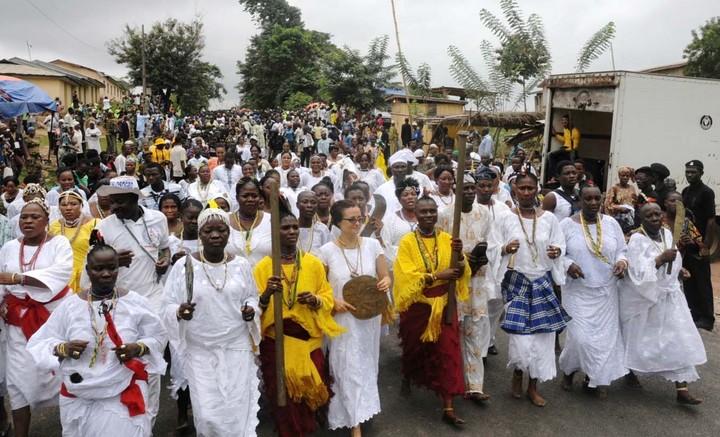Everything You Need to Know About The Osun-Osogbo Festival
By Solomon
18 July 2016

Every August, lots of people from around the world throng to Osun State, Nigeria, to attend and participate in the famous, two-week long Osun-Osogbo Festival. It is held at the illustrious and sacred Osun Grove, which was named as a UNESCO World Heritage Site in 2005. Although a sizable number of the participants are Osun indigenes, the festival has, over the years, morphed into an event that attracts the attention of tourists and visitors from other parts of the world.
The Early Years...

According to legend, the festival was borne out of the yearly sacrifice done to celebrate the river goddess, who serves as the protector of the the clan. The legend goes thus: about seven centuries ago, when the current Osogbo community was founded. The river goddess assured the people of her protection and promised to bless their women with fruitfulness of they would offer a sacrifice to her annually. The contract was sealed and the sacrifices and ceremonies became a thing - or so the legend goes.
The Susanne Wenger Effect...

The Osun-Osogbo festival has evolved beyond just being a cultural event celebrated by the Yoruba peoples of Osogbo to being a renown international celebration that keeps attracting new participants yearly. The story of the festival would be incomplete without talking about the significant impact that Susanne Sawyer - the Austrian born artist - had on the culture.
Susanne Sawyer and her husband, Ulli Beier, where stationed in Ibadan in the early 1950s. Ulli was hired at the University of Ibadan as a phonetician. They relocated to Osun soon afterwards and, there, Susanne cultivated a deep interest in the Yoruba religion, meeting and communicating with one of the priests of the religion at the time. She later became a Yoruba priestess herself, with the traditional title: Iwinfunmi Adunni Olorisha which loosely translates as ‘the loved one who or serves the deity.’
The White Priestess:

Susanne Wenger's influence is very remarkable in the scheme of things, as her ability to learn and interpret some of the intricate details about the Yoruba culture through her profound artistic gift and activism greatly contributed to making the festival more renown. As the guardian of the Sacred Grove of Osun goddess on the banks of the Osun River in Oshogbo, she helped restore many of the shrines that were in varying states of ruin from neglect. She also managed to preserve the forest around the grove, ensuring that no hunting or fishing was done around the groves, the tress weren't felled and that the scenery was kept sacred. She passed on 12th of January, 2009 at the Our Lady of Fatima Catholic Hospital in Osogbo.
RELATED: Going to Osun For an Event? Click for The Best Osun Hotels You Could Stay at
Main Attractions...
The Osun-Osogbo festival, without a doubt, is more than just sacrifices performed to celebrate the Osun River goddess. Not anymore, at least. There are several activities planned around the festival, as tourists and visitors all come to witness, interact and partake in the two-week long celebration. However, there is a sequence of rituals that kick off the celebrations and they are:
1. The Iwopopo Ritual: This is a ritual done to cleanse the city from evil. It is done first before the festival starts properly.
2. The Ina Olujumerindinlogun Ritual: This is the traditional ritual that involves the lighting of a 16-point lamp which is believed to be 600 years old. This ritual is carried out three days after the Iwopopo ritual is done.
3. The Iboriade Ritual: The Iboriade ritual is when all the crowns of the past kings - Ataojas - are assembled for blessings by the sitting Ataoja of Osogbo, the Arugba, the Yeye Osun, and a committee of priestesses.
4. The Arugba Ritual: This is one of the major highlights of the festival. A calabash containing the sacrifice materials that would be used to appease and worship the goddess is carried across town by a votary virgin, on her head. As she leads the procession to the river, the people, seeing her as a representative of the goddess, cast their problems on her and say prayers.

Beyond the traditional rites enumerated above, the Osun-Osogbo festival has a lot of other side attractions and activities that make the event a wholesome experience for even first time visitors and tourists. There are trade fairs, games and other fun activities planned out that make it an exciting two weeks of celebration.
Leave a comment
Leave a comment
Share